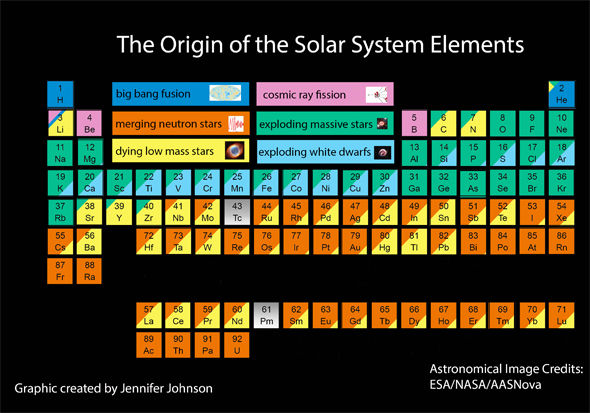The Astronomical Periodic Table Is Out of This World
Chem class(es) in university may have been a pain in the butt one time too many, but you can’t deny the allure of the Periodic Table. It’s so delightful (especially when you can actually look at it during the mid-terms) that its popularity has gone beyond the confines of the lab. We’ve got shower curtains, t-shirts, and even coffee tables with the Periodic Table printed on them.
Creative minds have also had fun with it, making variants one wouldn’t have (normally) thought possible.
Star Wars Periodic Table? Check.
Periodic Table of Fictional Metals? Check.
Periodic Table of Sci-Fi? Check!
This new discovery may very well trump all that we’ve seen so far, though. Called “The Origin of the Solar System Elements”, this version was created by Jennifer Johnson, an astronomer from the Ohio State University.
At first glance, it may seem that the table is not too different from the regular one. Indeed, it has the elements we’re all familiar with. However, it goes much deeper than that.
More than listing down each element, the periodic table highlights the origin. How’s that for detail?

How does it work? As simple as using coding to identify the different origins:
- Big Bang Fusion
- Merging Neutron Stars
- Dying Low Mass Stars
- Cosmic Ray Fission
- Exploding Massive Stars
- Exploding White Dwarfs.
Wondering why not all the elements are represented? The creator says that “Tc, Pm, and the elements beyond U do not have long-lived or stable isotopes.” She “ignored the elements beyond U in this plot, but not including Tc and Pm looked weird, so [she] included them in grey.”
Happy?







